Mini orchids: features and care tips
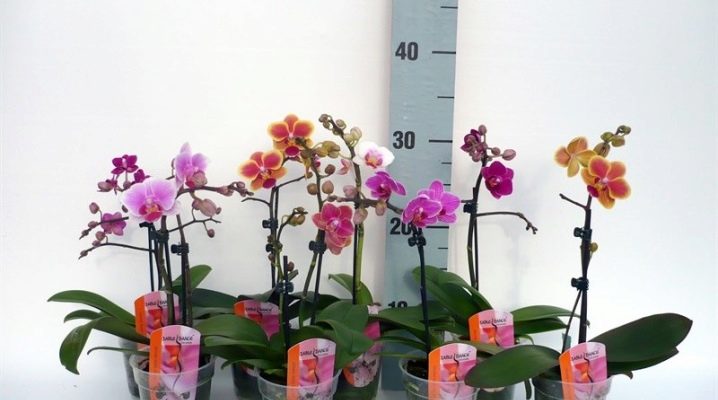
Today flower shops can provide their customers with whatever they want, so mini orchids are not in short supply. Such flowers will be a wonderful decoration in any home, especially if there is not too much room for flowers in the apartment. When buying such a beautiful plant, you need to know that it will require special care.
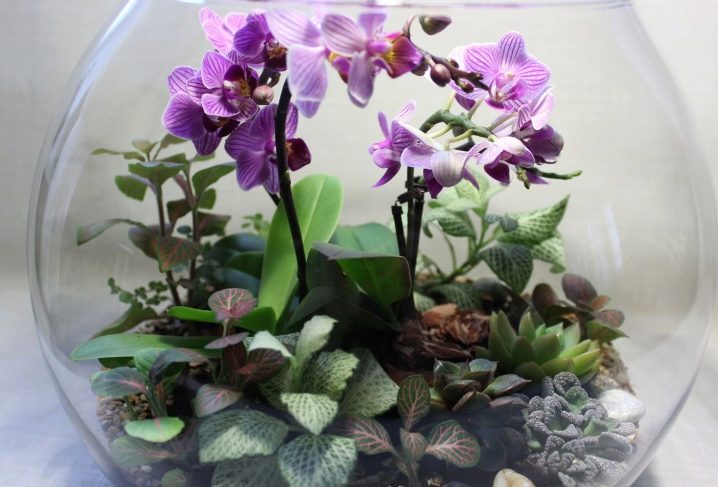
Peculiarities
Mini-orchids belong to herbaceous plants and are considered perennial. In their appearance, they resemble ordinary phalaenopsis, only lower. That is why it is often called dwarf, because these are the world's smallest orchids. Their main feature is considered to be small flowers, which can create whole inflorescences, or can be located on an ordinary stem alone. In fact, this plant often looks like a smaller copy of a large orchid.
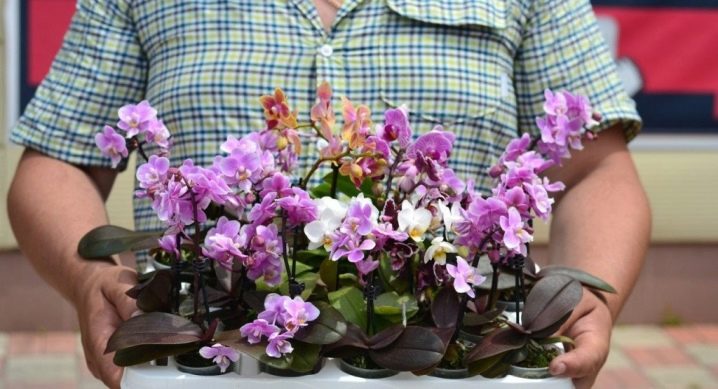
The height of such a phalaenopsis is from 12 to 20 centimeters, it all depends directly on the variety. The flowers are small in diameter, some of them up to 7 centimeters in size. The number of petals depends on the age of the mini orchid. Up to 15 flowers can be on the stem at the same time.
When the plant is completely covered with them, it is imperative to put up supports so that the stem does not break under such a heavy weight.
Flowering most often begins in winter and can last more than 1 month.
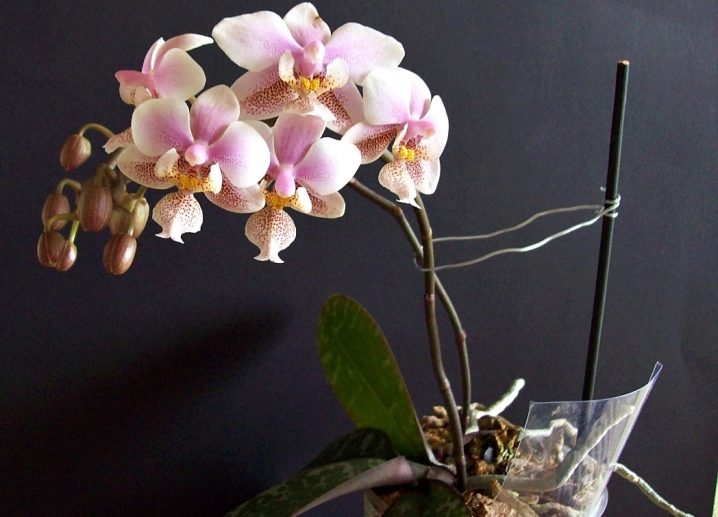
In nature, these beauties can be found in equatorial forests and among rocky terrain. Some of them live not only on the trunks of trees or on their branches, but even on the leaves of evergreen trees. However, breeders are most interested in those mini-orchids that have small roots, as well as pseudobulbs. The most beautiful among them are those plants in which the length of the stem is equal to the diameter of the flower. Such plants are simply mesmerizing with their beauty.
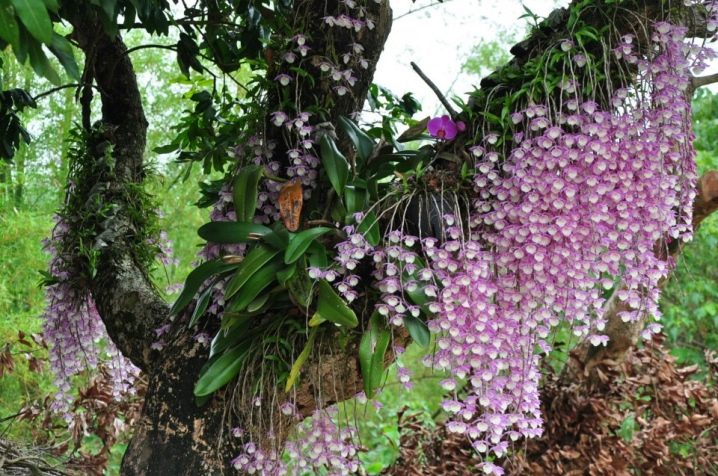
Types and varieties
Thanks to the efforts of specialists, many varieties of this plant have appeared. New varieties appear almost every year. They most often differ in the duration of flowering, as well as in the variety of colors. The most popular among them are Mini-Mark, Hummingbird, and Little Lady. To have a better idea of these beauties, you need to get to know them better.
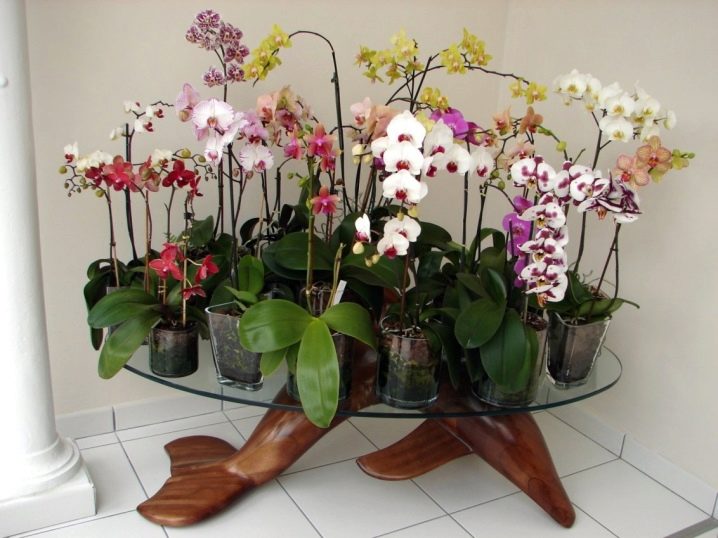
"Mini-Mark"
This hybrid appeared as a result of crossing Phalaenopsis with the Micro Nova mini-orchid. The leaves of this handsome man are quite rich in color; they are no more than 15 centimeters in length. Small flowers are placed on a small stem, up to 3 centimeters in circumference. Their color is white, with yellow or pink dots. In addition, the flower complements the brown “lip”.
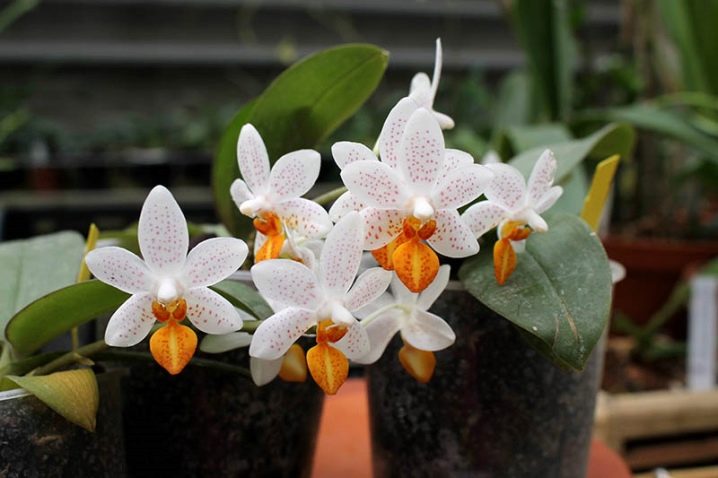
"Pink"
It is called so because of its color. This is one of the smallest varieties of orchids, which has leaves up to 8 centimeters in size. But the peduncle can be up to 18–20 centimeters. It contains about 12-14 flowers, which are very small in diameter, up to 3 centimeters.

"Luddemana"
This variety got its name from the famous Parisian breeder Luddemann and it also belongs to mini-orchids. Its stem can grow up to 20 centimeters. It can simultaneously accommodate 7 striped flowers with a bright purple color at once. But their tips are colored brown.
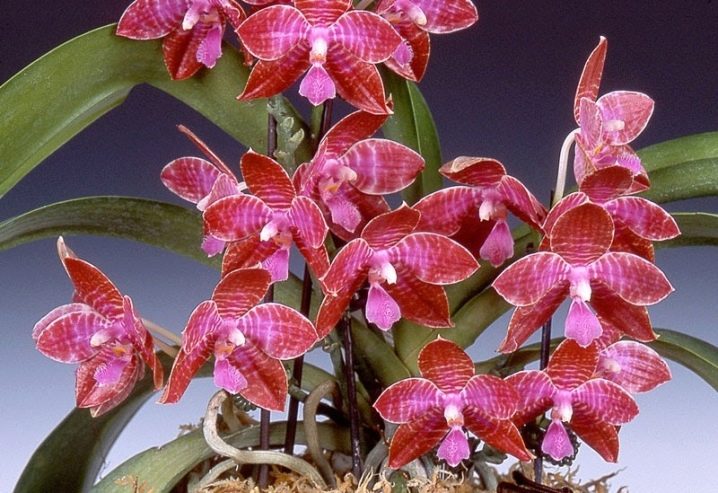
"Multiflora"
These plants are distinguished by a large number of small flowers, the diameter of which is up to 6 centimeters. Peduncle size can be up to 20 centimeters. In addition, they are branched, which allows you to admire a huge number of buds. The growth of peduncles does not stop even during flowering. When this plant reaches its peak, it is impossible not to admire its beauty, especially if it is not alone on the windowsill.
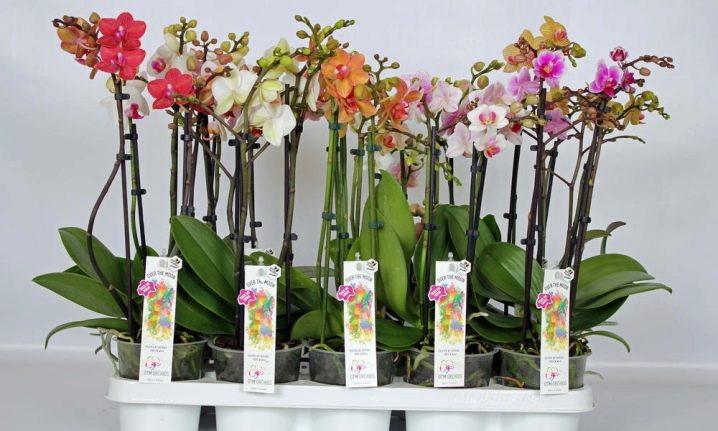
"Philadelphia"
This hybrid was obtained by crossing two varieties of phalaenopsis - "Shilera" and "Stuart". It has green leaves with a silvery tinge. From a distance they appear to be marble. Their flowers are placed on a peduncle that grows up to 18 centimeters in height. Most often they are purple in color, but there may be other colors.
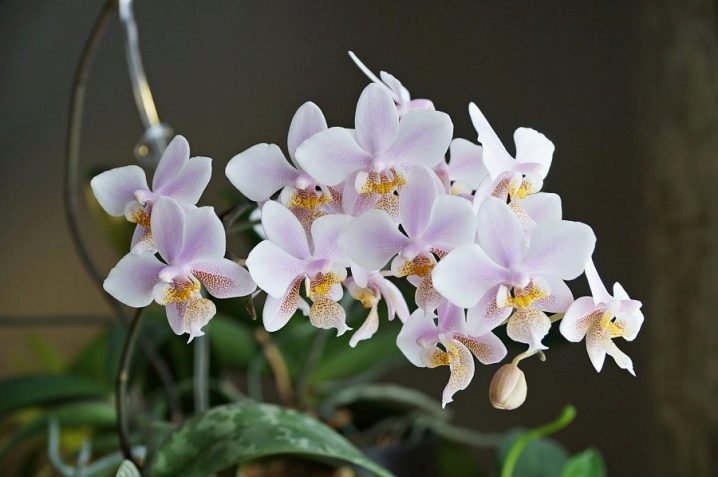
"Hummingbird"
A distinctive feature of this mini-orchid is its unusual flowers, a bit reminiscent of an asterisk or a small hummingbird bird. Her peduncle is very small, up to 12 centimeters. However, this small stalk perfectly accommodates several flowers, which can delight their owners for quite a long time, up to 35–45 days.
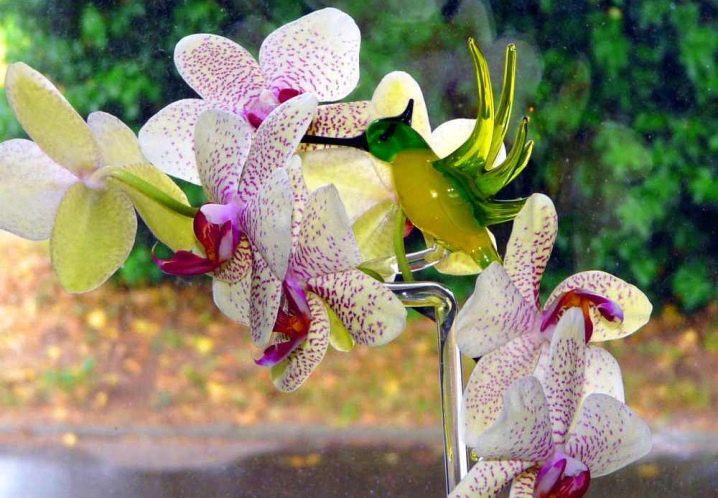
"Cattleya"
For growing at home, this small mini orchid is perfect, which is quite popular among many gardeners. However, among this group, it is worth noting the Valkera variety. It is distinguished by small, dark green leaves, which are up to 10 centimeters long. But her flowers are quite large, up to 8 centimeters in diameter.

"Cymbidium"
This bright plant is the most unpretentious to care for. In addition, it has a very delicate and unobtrusive aroma. When an orchid blooms, it is impossible to walk past it and remain indifferent. The plant itself looks fragile. The peduncle grows surrounded by long and narrow leaves and is no more than 15 centimeters. But flowers, the diameter of which is no more than 5 centimeters, are quite diverse: both white and pink.
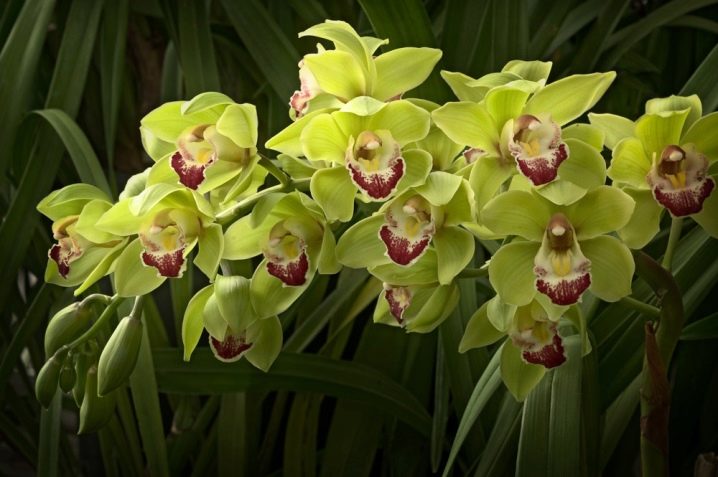
Home care
Mini orchids require a lot of attention, therefore, having decided to have such beauty on your windowsill, you need to learn how to properly care for them.
Correct lighting
Like many orchids, these little beauties prefer bright, but diffused light. Therefore, it is best to place them on the west or east side.
If this is not possible, and the windows are only on the south side, then they need to be slightly covered when the sun is shining too much. This can be done with light curtains.
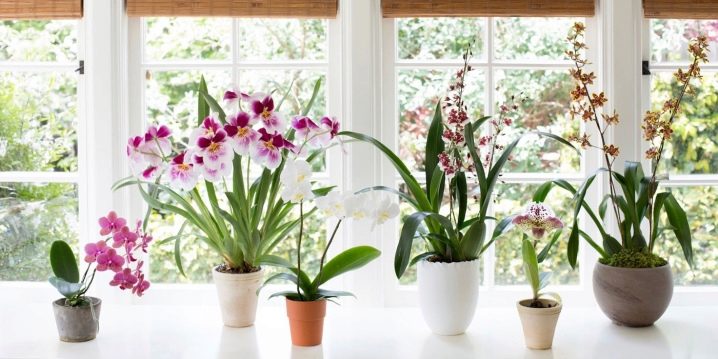
Temperature and humidification
The temperature regime for orchids should be approximately the same throughout the year. The minimum temperature for this plant should be at least + 17– + 18 degrees. But the maximum should not exceed +22 degrees. If at night it is slightly lower, then this will allow it to bloom longer and more beautifully.
Humidity does not really matter when leaving, but it is still better if it is within 60 percent. When the air is dry, the development of orchids immediately stops.
In addition, you need to know that the higher the temperature in the room, the higher the humidity should be.
To increase it, you can purchase special humidifiers or just put small containers of water in different places.
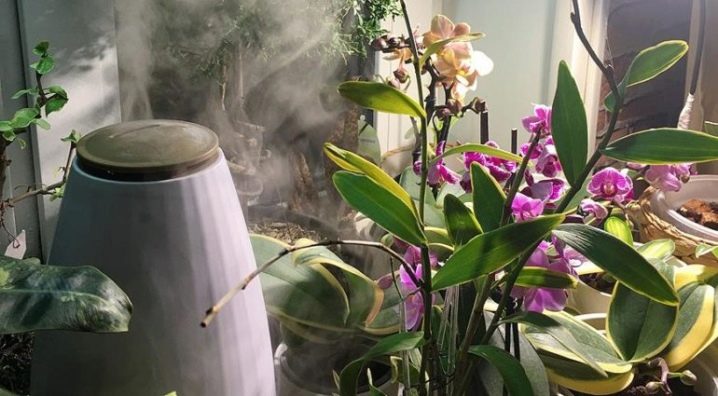
Substrate selection
Very often, for the good development of this plant, only sphagnum moss is used. However, in some cases, pine bark is added to it, as well as a little charcoal to prevent the development of rot in the root system. You can buy it at any flower shop.

Proper watering
Since most orchids are grown in a pot with sphagnum moss, the plant needs to be watered daily, because it absorbs moisture rather quickly. However, it is best to simply spray it. For this, 20-40 ml of water will be enough. It must be soft and warm.
In addition, sometimes you can bathe mini-orchids in the shower, the procedure should last at least 10 minutes. The water temperature should be no higher than +35 degrees.
When the procedure is completed, excess water must be drained off so that the roots do not rot. This will take at least half an hour.
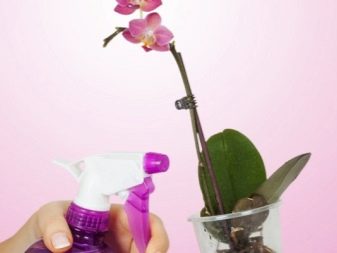
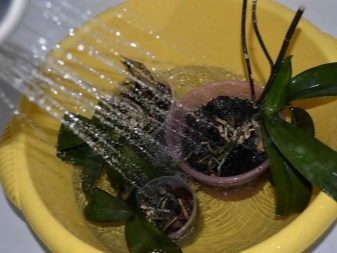
Top dressing
Fertilization of these beauties should be carried out only 50-60 days after transplantation. In addition, if rot was found on the roots, then it is best to refuse this process. Top dressing is carried out after abundant watering of the orchid. In addition, you should not do it when the orchid is in bloom. Top dressing can be of two types.
Root
It is carried out more to stimulate the growth of a small plant. Fertilizer should be applied immediately after watering by placing it directly into the ground. After that, the flower must be moved to a warm place for several hours, avoiding direct sunlight.
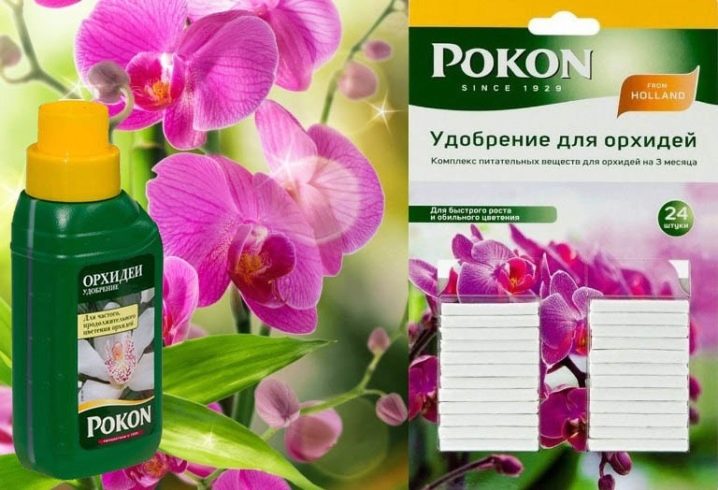
Foliar
In this case, the fertilizer is best dissolved in water and then sprayed with a spray bottle. However, this must be done very carefully so that it does not fall on the flowers.
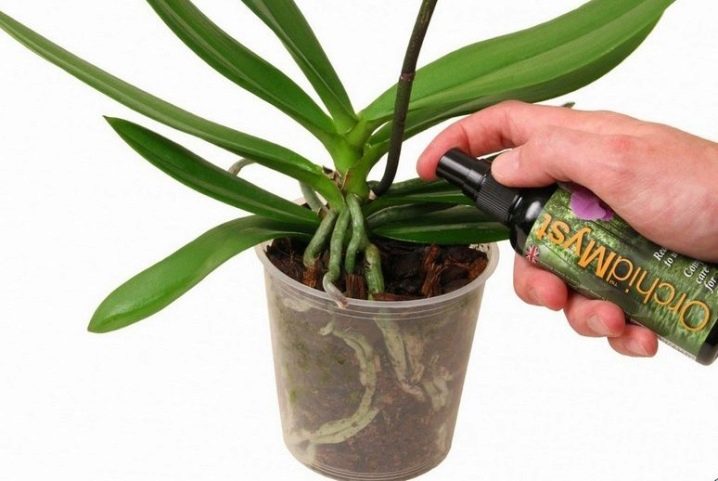
If you follow all these rules, then the mini-orchid will grow strong and beautiful.
Transfer
Having brought this beautiful plant into the house, you need to think about how to transplant it correctly immediately after purchase. In addition, this should be done at least once a year. To understand how to do this, you need to consider all the steps step by step.
- To begin with, the orchid must be removed from the flowerpot and immediately transferred to a container of warm water. Then the roots must be freed from the old substrate, and all dry or rotten areas must be cut off. All cuts should be treated with either cinnamon or charcoal.
- After that, there is a landing. To do this, you need to take a slightly larger flowerpot and place the prepared plant in it. All voids must be filled with fresh substrate purchased from the store.
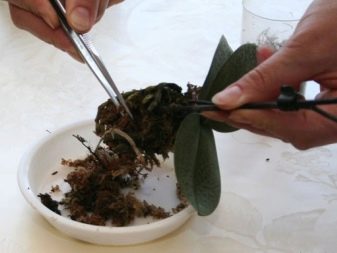
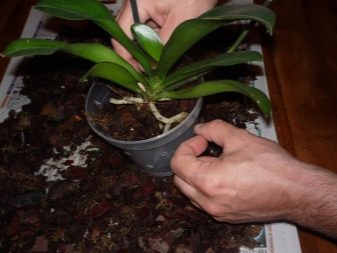
Diseases and pests
If a mini-orchid does not bloom for a long time, and the leaves turn yellow, this means only one thing - the plant is sick. Various antifungal medications can be used to treat it. It is worth considering the most common among them.
Rotting roots
Appears only in case of improper watering. In this case, the plant must be transplanted immediately, having previously removed all the rotten places.
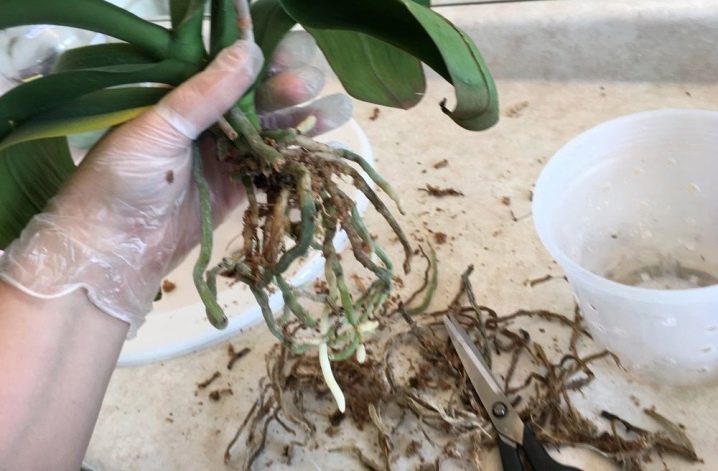
Root system atrophy
This is due to the fact that the wrong soil was picked up or the plant has grown too much. In this case, it must be divided and transplanted into two flowerpots.
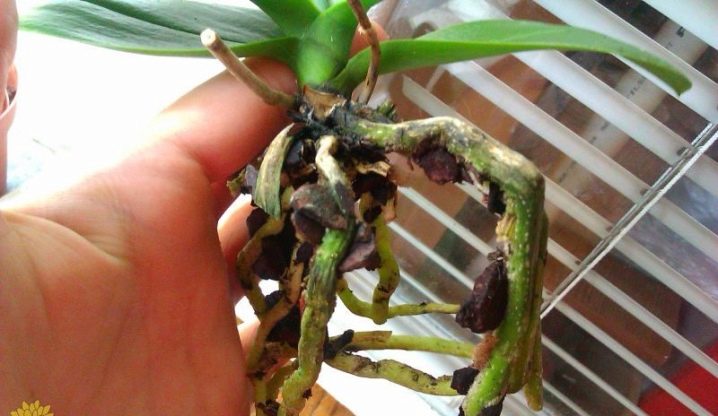
Bacterial stains
The leaves become dark in color. For treatment, they must be removed, and all sections must be processed.
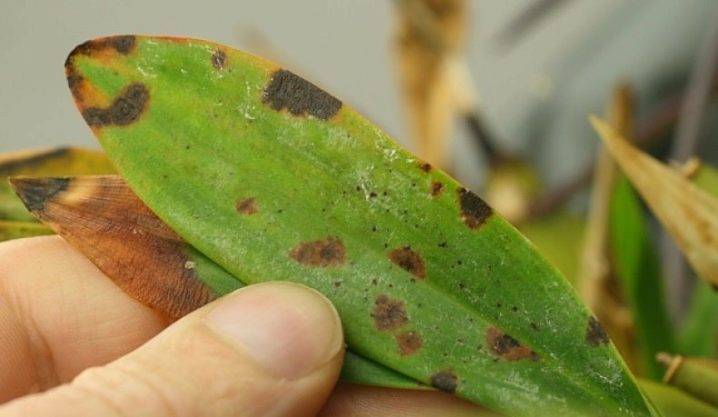
Do not forget about harmful insects, which can not only harm the plant, but also lead to its death. It is worth noting the most common pests of mini orchids.
Schervets
This pest feeds on orchid juice, while secreting mucus, as a result of which even fungal diseases can appear. To get rid of it, you can use different fungicides.
If the plant is re-infested, then another fungicide must be taken, as addiction to the drug may result.
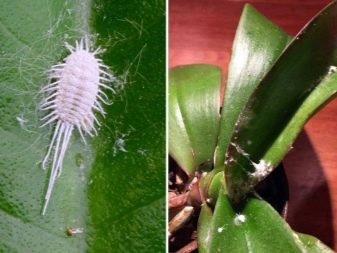
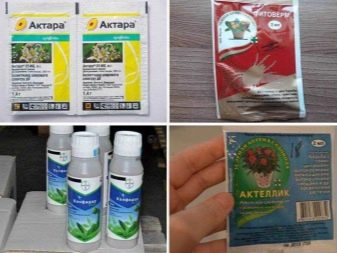
Aphid
This is a rather harmful insect. It is capable of acquiring the color of the plant on which it is located. Most often these are large colonies that can bring any plant to death. They also feed on orchid sap. To combat them, you can use folk remedies, for example, soap solution, or you can use chemical preparations.
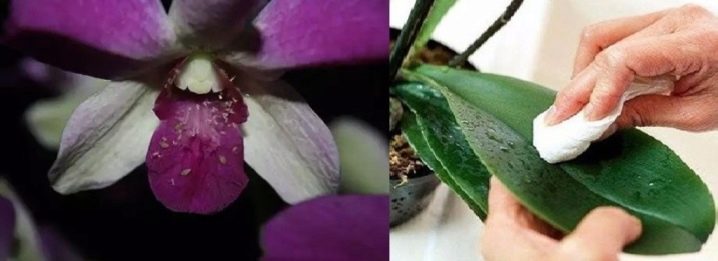
Shield
This is a very dangerous insect that bears some resemblance to aphids. However, his color is almost black. And also this pest can fly to a plant that is nearby and also infect it. In the fight against them, you can use chemicals.
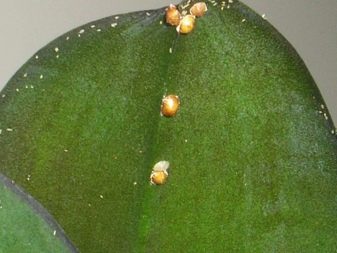
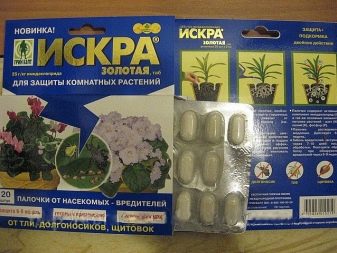
Such a beautiful plant as a mini-orchid will become a wonderful interior decoration for many indoor plant lovers. And following the rules of caring for him, she will be able to please her owners for a long time.Even beginner growers can start breeding amazing plants such as mini orchids.
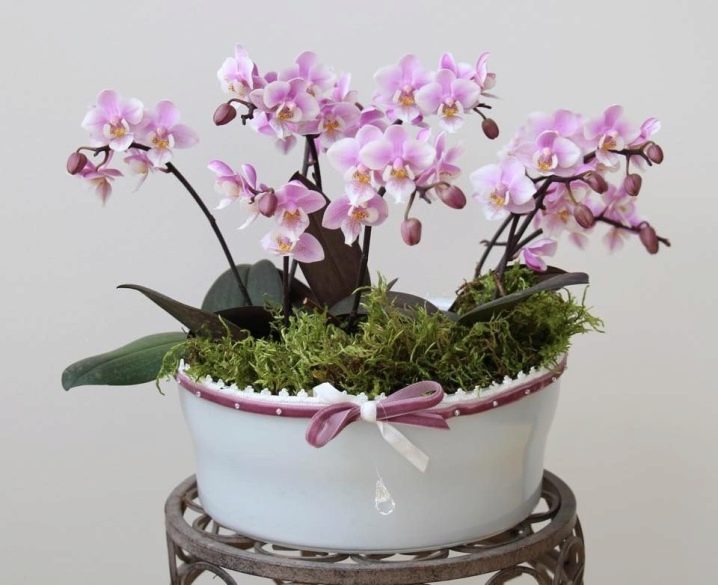
For tips on growing and caring for mini-orchids, see the following video.































Flowers cannot be grown in crystal, because it contains zinc and lead. Flowers in the cut can stand for a long time, but they never take root.
The comment was sent successfully.